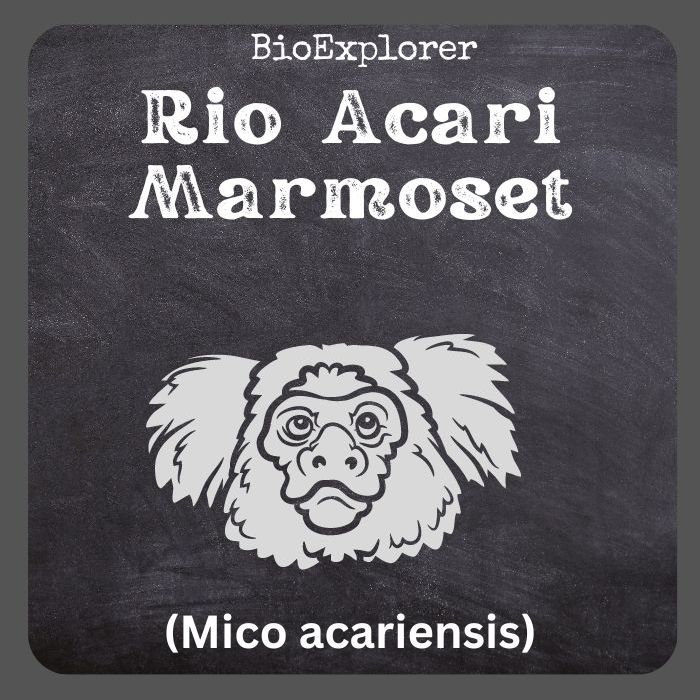
| Animalia | Primates | Callitrichidae | Mico | Mico acariensis |

- Common Name: Rio Acarí Marmoset
- Taxonomy Classification Year: 2000
- Monkey Size: 22 to 22 cm (8.66 to 8.66 in)
- Skin Color(s): Snowy-white
- Habitat: Forest, rainforest
- Diet: Omnivorous
- Native Countries: Brazil
Rio Acarí Marmoset Distribution
Rio Acari Marmoset Characteristics
The Rio Acari marmoset[1] (Mico acariensis) is endemic to Brazil. It was first described in the year 2000.
- The Rio Acari marmoset is snow white on the upper body, fading distally from gray to dark gray mixed with orange on the back and with an orange stripe running down each knee.
- The dorsal sides of the arms and hands are gray mixed with orange, the ventral sides of the forearms are white with orange, and the ventral sides of the legs are white, fading distally to orange with bright orange inner surfaces.
- The neck and chest are white, the belly is bright orange, and the tail is black with a bright orange tip.
- The face is bare and pink or flesh-colored, with black spots between the eyes, on the sides of the nostrils, and on the lower lip and chin.
- The nose has a narrow triangular patch. The eyes are orange-brown. The genitalia is depigmented and exposed.
Rio Acari Marmoset Facts
- These Brazilian monkeys use their specialized claws to forcefully grip tree trunks and gnaw small holes in the bark with their lower incisors and canines.
- The Rio Acari marmoset is considered to be the species most capable of adapting to human changes in its environment.
- The species was first introduced by humans to southeastern Brazil, where it has spread so successfully that it is regularly seen outside the park in Rio de Janeiro.
- Marmosets live in mixed groups of up to 13 individuals. Only the male and female heads produce offspring.
- Behaviorally, Rio Acari marmosets tend to have a squirrel-like movement, clinging vertically to trees, traversing branches with four legs, and moving between trees by hopping.
Suggested Reading: Monkeys Vs. Monkies
Cite This Page
APA7MLA8Chicago
BioExplorer.net. (2025, December 19). Rio Acari Marmoset. Bio Explorer. https://www.bioexplorer.net/animals/mammals/monkeys/rio-acari-marmoset/.
BioExplorer.net. "Rio Acari Marmoset" Bio Explorer, 19 December 2025, https://www.bioexplorer.net/animals/mammals/monkeys/rio-acari-marmoset/.
BioExplorer.net. "Rio Acari Marmoset" Bio Explorer, December 19 2025. https://www.bioexplorer.net/animals/mammals/monkeys/rio-acari-marmoset/.











